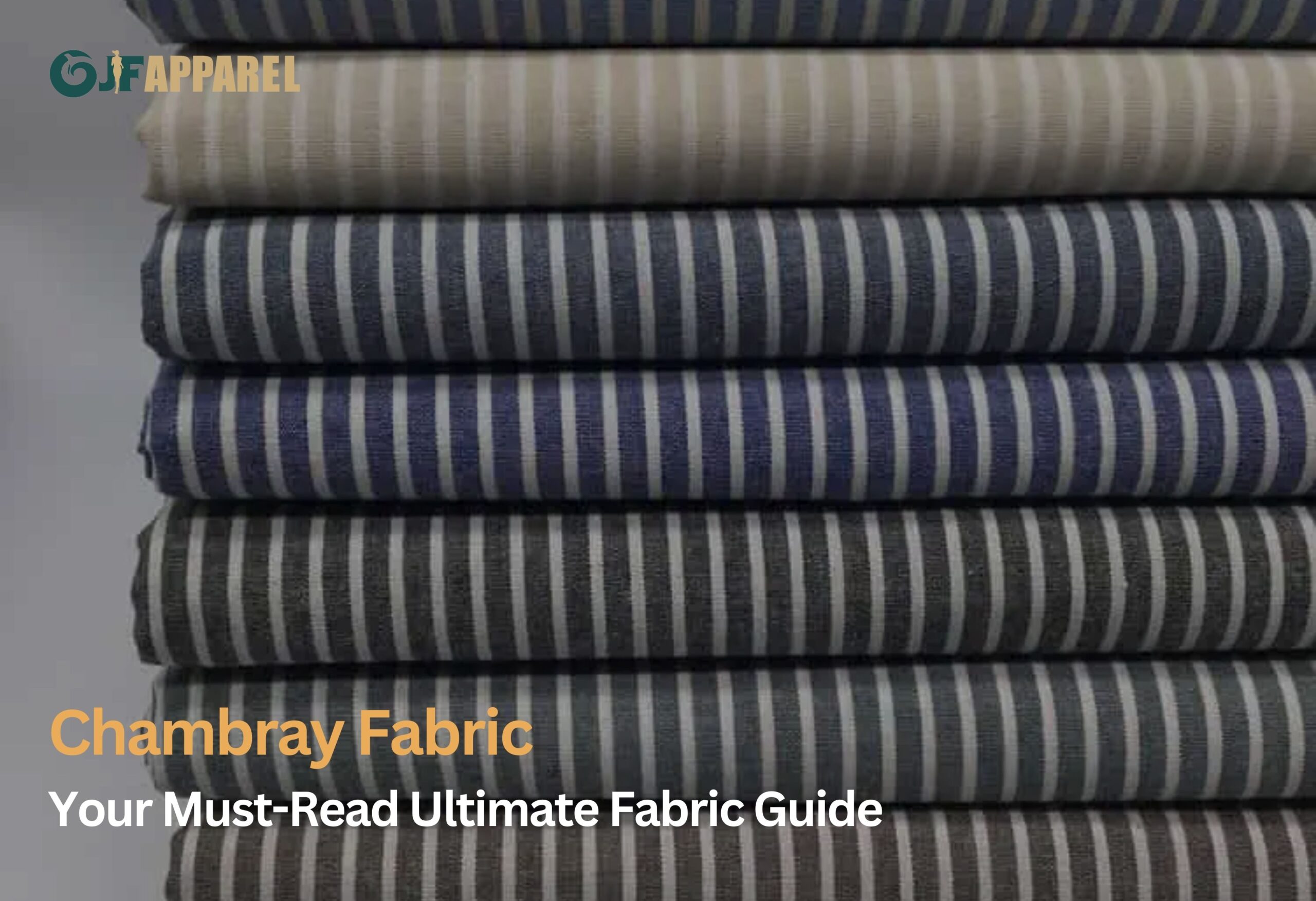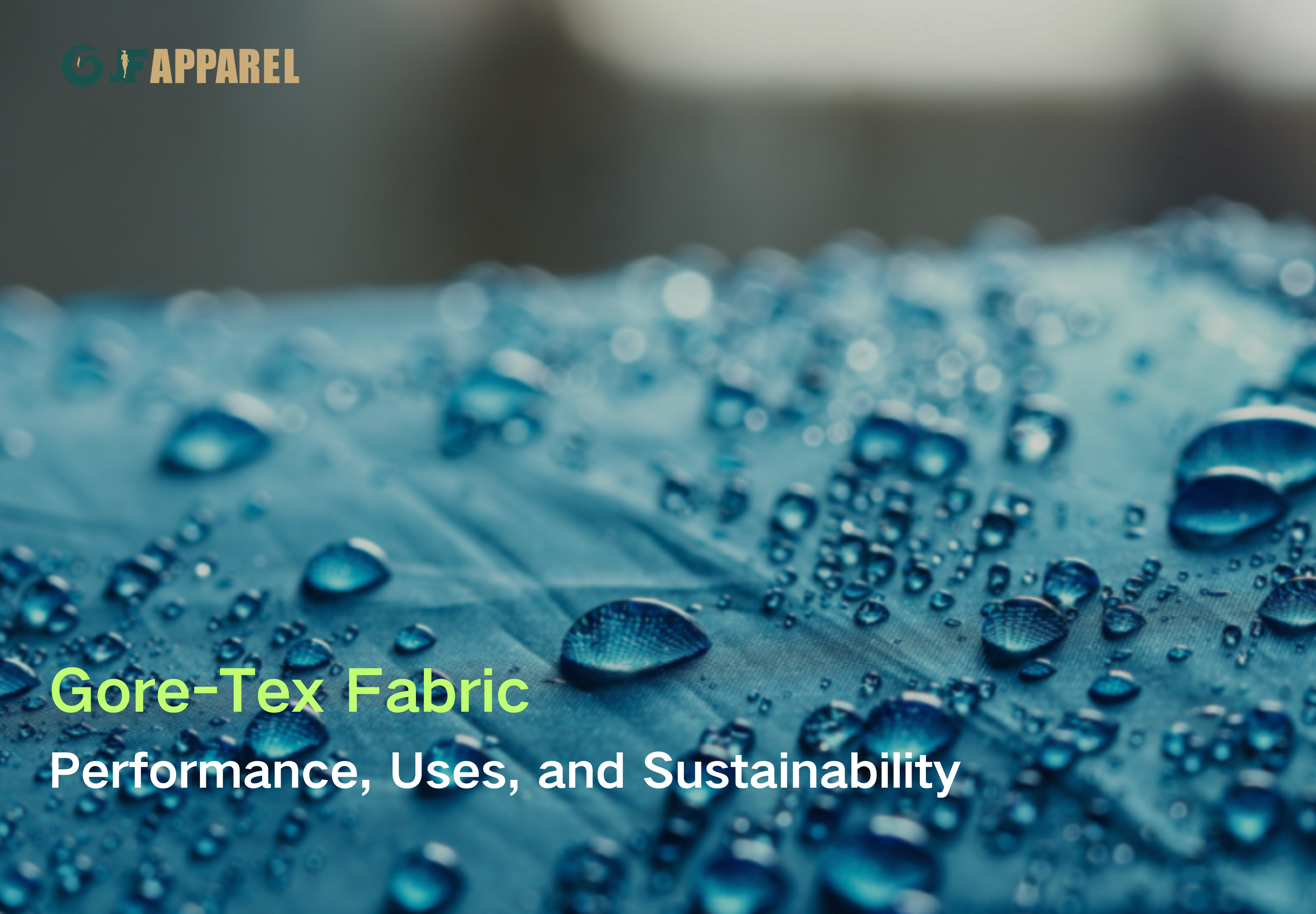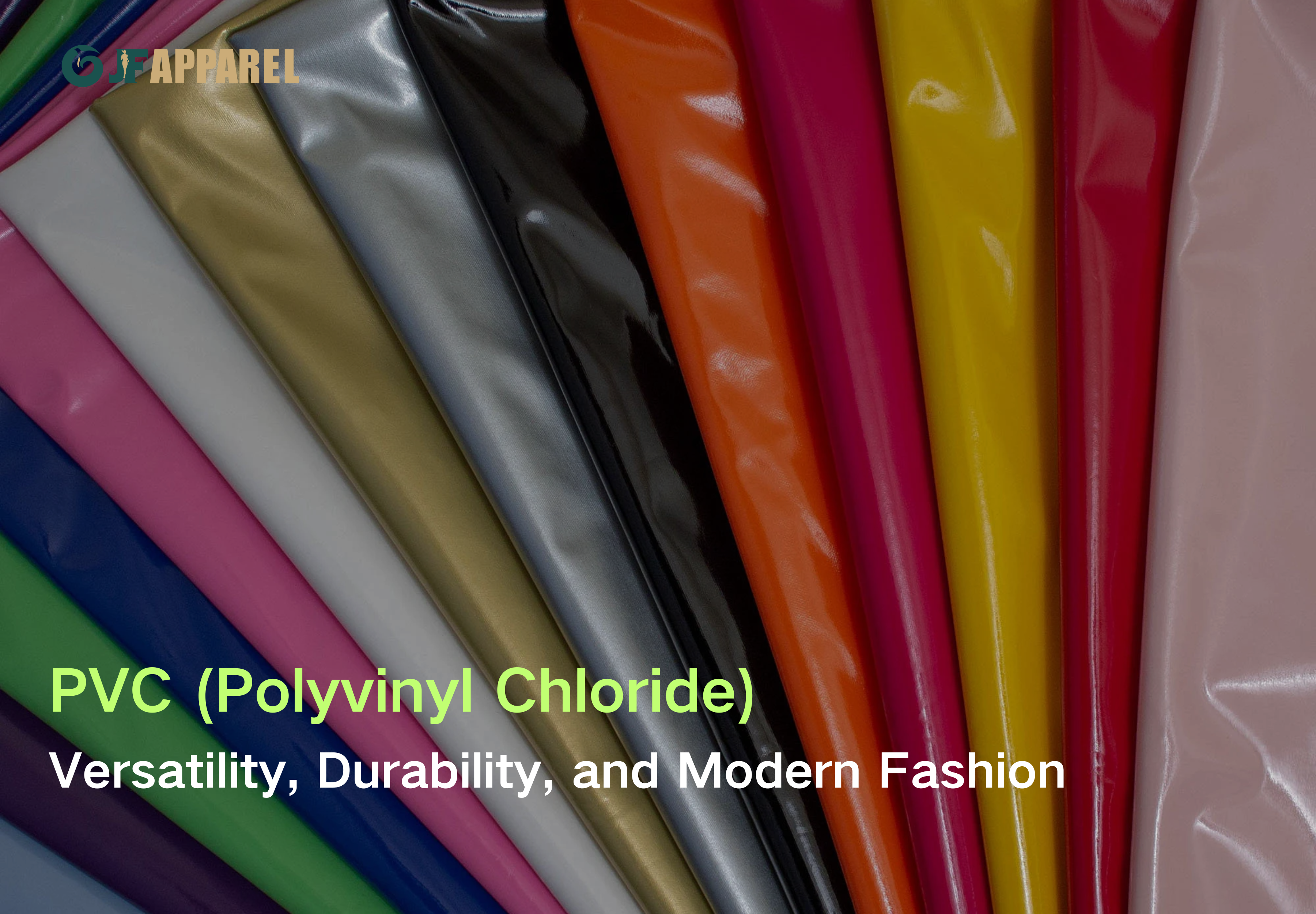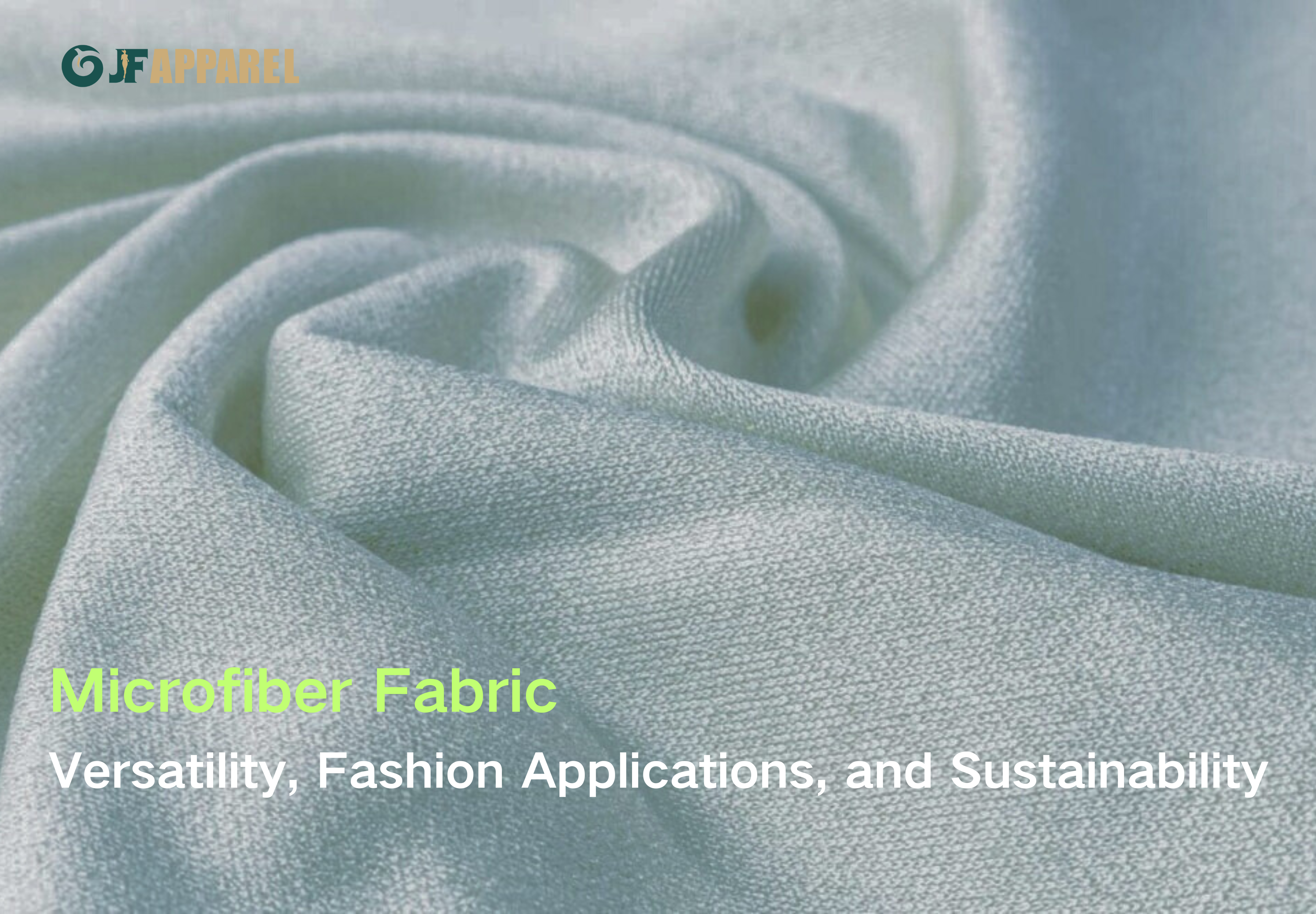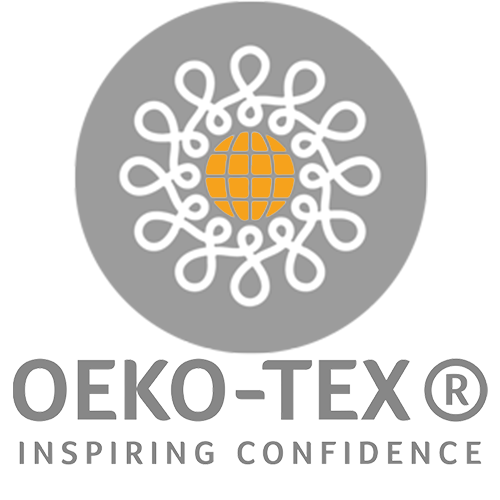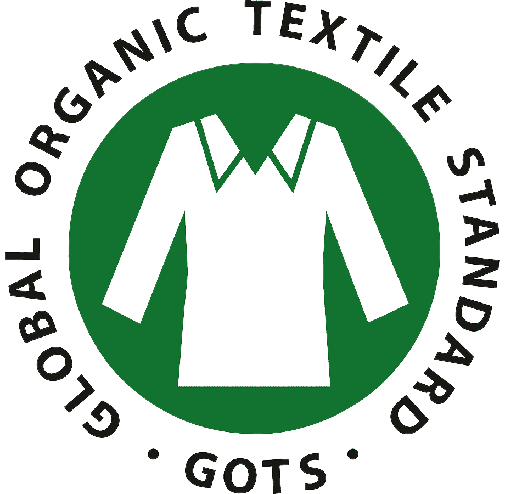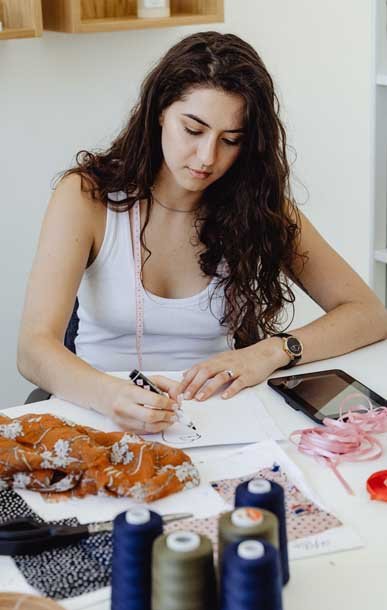Chambray Fabric
Chambray fabric stands at the intersection of comfort and elegance, offering a unique blend of durability and sophistication. Whether you’re a designer seeking the perfect material for your next collection or a brand aiming to add a touch of class to your lineup, Chambray is the ideal choice. Its versatility and timeless appeal make it a staple in the fashion industry, suitable for a wide range of applications.
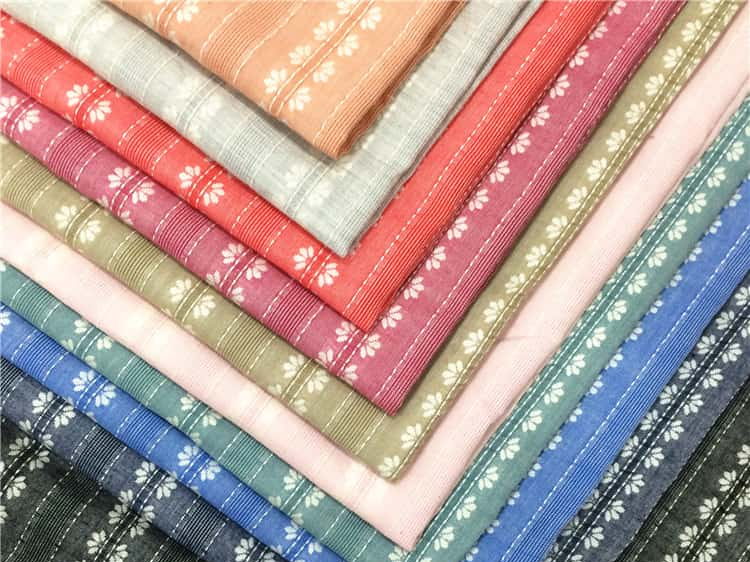
Key Features
- Exceptional Comfort
- Breathability
- Durability
- Elegant Appearance
- Versatile Design
Unique Manufacturing Process
Chambray fabric undergoes a meticulous manufacturing process that sets it apart from ordinary fabrics:
Colored Warp and White Weft: The unique weaving technique involves using a colored warp and white weft, giving Chambray its characteristic dual-tone and textured appearance.
Fine Weaving: The plain weave construction ensures a smooth, even surface, enhancing the fabric’s softness and comfort.
High-Quality Dyes: Chambray fabric is dyed using high-quality, eco-friendly dyes that ensure vibrant colors and long-lasting brilliance.
Pre-Shrunk Treatment: To prevent shrinkage and maintain the fabric’s dimensions after washing, Chambray undergoes a pre-shrunk treatment, ensuring consistency in your final products.
Differences from Ordinary Fabrics
Chambray fabric offers several advantages over ordinary fabrics:
Softness vs. Roughness: Chambray is significantly softer than denim, making it more comfortable for everyday wear.
Breathability vs. Heaviness: The lightweight and breathable nature of Chambray contrasts with the heavier and less breathable denim.
Versatility vs. Limited Use: Chambray’s elegant appearance makes it suitable for both casual and formal garments, while denim is typically reserved for casual wear.
Eco-Friendly Production: The manufacturing process of Chambray involves eco-friendly dyes and practices, reducing its environmental impact compared to some other fabrics.
Available clothing types
- Chambray shirt dress cornflower
- Denim chambray trousers
- Bray printed pleated georgette maxi skirt
- Denim chambray shorts for women
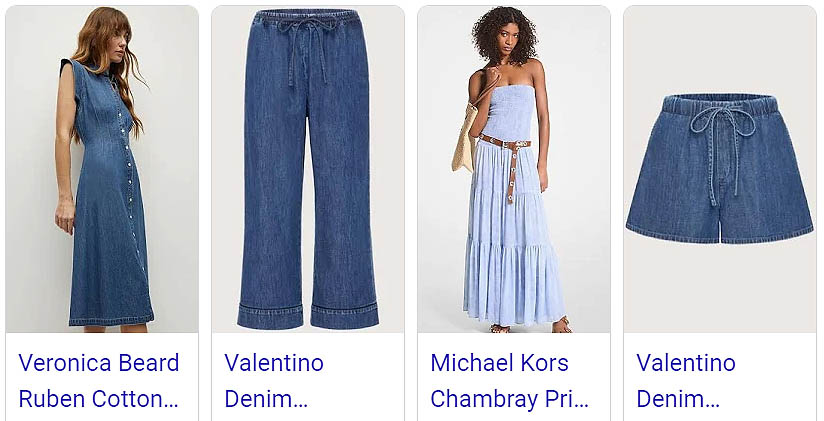
Available colors

Application scope
Chambray fabric is prized for its versatility and can be used to create a wide array of fashionable items:
Shirts and Blouses: Chambray shirts and blouses offer a relaxed yet sophisticated look, perfect for both office wear and casual outings.
Dresses and Skirts: Create breezy summer dresses and skirts that are not only stylish but also comfortable and easy to wear.
Pants and Shorts: Ideal for casual and semi-formal attire, Chambray pants and shorts provide a chic alternative to denim.
Outerwear: Lightweight jackets and blazers made from Chambray fabric offer a stylish layer that can be dressed up or down.
Accessories: From scarves and headbands to bags and hats, Chambray adds a fashionable touch to various accessories.
Care Instructions
To maintain the quality and longevity of Chambray garments, follow these care guidelines:
- Machine Wash: Use cold water and wash with similar colors to prevent fading.
- Gentle Cycle: Opt for a gentle cycle to preserve the fabric’s fibers and texture.
- Air Dry: For best results, air dry Chambray garments to maintain their shape and prevent shrinkage.
- Iron on Low Heat: Iron on a low setting to smooth out wrinkles and keep your garments looking pristine.
Frequently Asked Questions
What makes Chambray fabric unique compared to other fabrics?
- Chambray combines the durability of denim with the softness of fine shirting fabric, making it a versatile and stylish choice for various garments.
Is Chambray suitable for all seasons?
- Yes, Chambray’s breathable and lightweight nature makes it ideal for warm weather, while its durability and ability to layer make it suitable for cooler seasons as well.
Can Chambray fabric be customized?
- Absolutely! Chambray is available in a range of colors and finishes, allowing designers to tailor it to their specific needs and creative visions.
How to view the complete FAQ
The history of chambray fabric
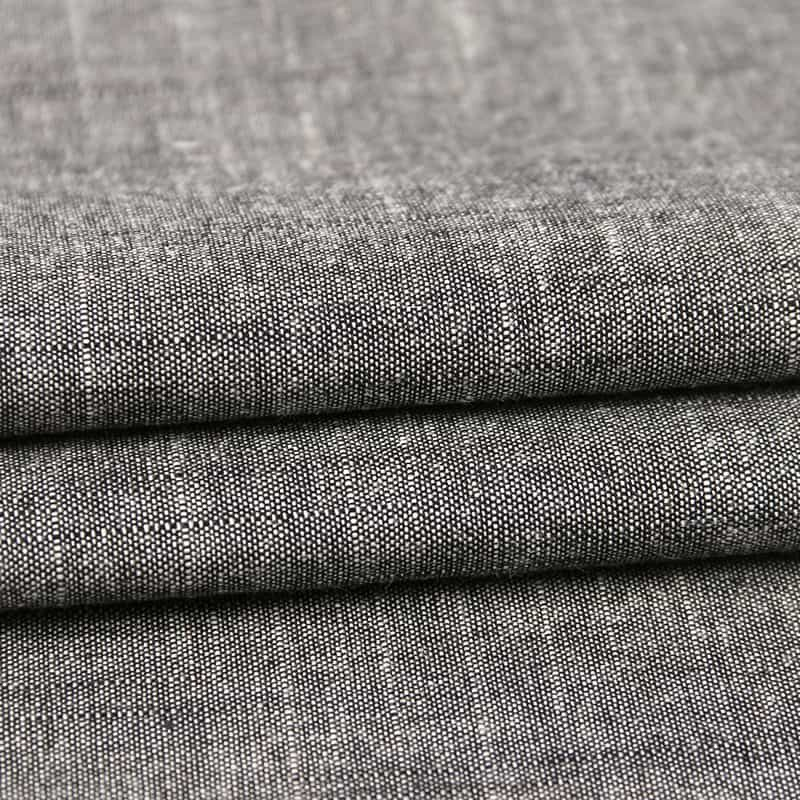
The history of chambray fabric dates back to the 14th century, with its invention credited to the French weaver Baptiste. By the 1530s, this fabric was known as cambric, named after the French town of Cambrai where it was produced.
Originally, the term “cambric” referred to fine white linen, although some weavers also used silk. In the 18th century, the British banned the import of French fabrics, leading them to refer to Indian cotton fabrics as “cambric” or “batiste.”
Over time, the term chambray became more widely accepted to describe this type of weave. In the 19th century, chambray textiles gained popularity in the United States due to their breathability and durability, making them a common choice for workwear.
Is Chambray Fabric the Same as Denim?
Due to their similar weaving patterns, chambray is often mistaken for denim. However, chambray is softer and lighter, whereas denim is known for its durability and heavy texture.
Is Chambray Fabric of Good Quality?
Chambray is not necessarily a low-quality fabric. It has a long history of being used to create luxurious garments. The yarn count of chambray can range from 150 to 500, indicating that it is made from thousands of fine, tightly woven fibers, resulting in a soft texture.
The higher the yarn count, the better the quality of the fabric. Chambray is renowned for its high quality and suitability for use in hot weather.
How Does Chambray Fabric Impact the Environment?
The environmental impact of chambray fabric depends on the materials used and their sources.
Between cotton and synthetic materials, cotton is more sustainable. Cotton can be organically grown and is biodegradable. In the context of fast fashion, cotton chambray is a better choice as it can still be recycled or upcycled.
A more eco-friendly option is linen chambray. Compared to cotton, linen requires fewer chemicals and less water during processing. It is also biodegradable and recyclable.
Conclusion
Chambray fabric is an excellent choice for those who want the look of denim without the weight, especially in warm or hot weather.

